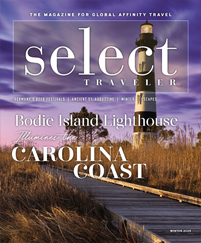Local botanical gardens are a unique way for groups to explore a place though its flora. Across the South, remarkable properties welcome visitors in search of landscaped greenery to tour.
Some, like Houmas House and Middleton Place, are tied to historic properties that take guests back in time. Others, like the Memphis Botanical Gardens and the Birmingham Botanical Gardens, cultivate native plants or create elaborate themed gardens where visitors can learn, enjoy and explore. Here are six extraordinary gardens across the South that are worth a visit.
Lewis Ginter Botanical Garden
Richmond, Virginia
Heiress Grace Arents inherited millions from her uncle, Lewis Ginter, then dedicated her life to improving Richmond, Virginia, earmarking her 73-acre farm to become a botanical garden. The project began in 1984, and 40 years later encompasses 82 acres, including 15 outdoor gardens like the children’s garden and one that grows produce for local food banks. It has four lakes, plus a historic conservatory and greenhouse. The garden welcomes more than 450,000 guests annually and has been named one of the top botanical gardens in the country by numerous outlets.
“We are a fairly young garden, but the site has a very rich history,” said chief marketing officer Beth Monroe. “We’ve been on a tremendous growth trajectory since we opened, with a lot more to come. It’s been a very exciting journey for the garden and the Richmond community.”
Lewis Ginter has year-round appeal. In spring, the gardens are abloom with a million flowers, and during the holiday season they’re festooned with thousands of lights. The garden regularly features special art exhibits and events like Butterflies Live, when the conservatory is filled with thousands of butterflies. They also offer a roster of classes teaching everything from yoga to watercolor painting and cocktail mixing. Groups can enjoy both self-guided and guided tours.
Birmingham Botanical Gardens
Birmingham, Alabama
Since its founding in 1962, the Birmingham Botanical Gardens has celebrated Alabama’s diverse native plants. There are more than two dozen gardens spread over the site’s 67 acres. Guests can wander among its several acres of natural wooded growth; a 50-year-old sycamore tree whose seeds went to the moon in 1971 to study the effects of space travel; a rose garden; several gardens designated to rhododendrons, camellias and crape myrtles; and a popular favorite, the Japanese Garden.
“One of my favorites, and the favorite of most of our visitors, is our Japanese Garden,” said Félix Ortiz, communications and marketing associate at the gardens. “It’s just so tranquil and beautiful — we have a Toshinan Teahouse that is a 16th century teahouse made from materials from Japan and constructed by Kazunori Tago, a temple and shrine builder from Japan. It’s used for traditional tea ceremonies but is also just a great place to enjoy the beauty of the garden.”
The Birmingham Botanical Gardens is free to the public and open 365 days a year. Groups can opt for guided garden tours led by trained garden guides, focusing on either garden highlights or more specialized topics.
Houmas House
Darrow, Louisiana
An hour from New Orleans in Darrow, Louisiana, Houmas House is a 250-year-old estate with 38 acres of cultivated gardens, including numerous oak trees planted by indigenous people some 600 years ago. The historic gardens feature traditional azaleas and camellias amid statues and fountains, while the remainder is full of exotic colorful flowers and foliage and even a replica of the bridge at Monet’s garden in Giverny.
“We have about 70 live oaks — our largest oak tree is called the Burnside, and it’s 330 feet wide and 65 feet tall,” said Kevin Kelly, owner of the estate. “It has these enormous, majestic branches. When people see it they say, ‘This is the most beautiful tree I’ve ever seen,’ and it truly is — it’s just major.”
Groups can take self-guided tours through the garden, followed by docent-guided tours of the 1760 and 1810 mansions. Restored in the antebellum style, the property exhibits life along the Mississippi in the 1800s. Groups can have lunch at the Carriage House, which offers Louisiana fare and table service, or at the Dixie Cafe, a casual, buffet-style affair with indoor and outdoor seating.
Middleton Place
Charleston, South Carolina
America’s first landscaped gardens, Middleton Place was established in Charleston, South Carolina, in 1695 and owned by the Middleton family. The patriarch, Henry, was president of the first U.S. Congress, and his son, Arthur, was a signer of the Declaration of Independence. Remarkably, the estate, modeled after its English counterparts, has remained intact without being updated in style or developed.
“When you think about it, in 1741, this was just a high bluff on the Ashley River,” said Tracey Todd, president and CEO of Middleton Place Foundation. “Henry Middleton was attracted to this piece of land and its topography. It was full of trees that had to be removed — cutting them down, removing the stumps and roots. It’s hard for us to wrap our minds around the amount of labor it took with no machinery.”
Home to one of the country’s oldest collections of camellias and crape myrtles dating from the 1780s, the formal parterre and terraced gardens (whose highlights are butterfly-shaped lakes) are a top attraction. The House Museum is full of authentic artifacts used by generations of the family, who lived there until 1975, and it documents not only the lives of the family but also its thousands of enslaved residents. The stableyards portion of the property features a blacksmith, cooper, pottery shop, textile shop, the cottage of one of the freedmen and numerous heritage livestock breeds.
Groups have a range of visiting options that include guided tours of the garden, property and house. The Middleton has an exciting option for lunches: a farm-to-table Low Country restaurant with a garden steps from the kitchen.
Memphis Botanical Gardens
Memphis, Tennessee
In the heart of Memphis, Tennessee, the Memphis Botanical Gardens spans almost 100 acres, offering a respite from the hustle and bustle of Beale Street. It features 30 specialty gardens, including the Japanese garden, whose iconic bright red bridge is a Memphis landmark.
“We got started in 1953 as an iris garden, and next year marks our 70th year anniversary, which we’re very excited about,” said director of marketing Olivia Wall. “We’re known for our pollinator garden and our diverse herb garden, too. We have a variety of adult group programs that range from talks on butterfly gardening to native plants to tree identification — there are about 30 topics to choose from.”
The Memphis Botanical Gardens also offers hands-on workshops that allow participants to create something to take home with them, like a terrarium or herb garden. Guided tours, either on foot or on a tram, offer an overview of the garden’s highlights. The staff can also guide special topic tours focused on a particular area of interest in the garden.
Dining options include the on-site cafe, a prearranged boxed lunch to picnic or a catered event.
Old Salem Museums and Gardens
Winston Salem, North Carolina
Founded in 1766, Old Salem was a Moravian community whose structures still stand in Winston Salem, North Carolina, functioning as museum spaces and telling the stories of the Moravian, Black and Indigenous people who lived in the South at the time. Groups will want to explore all the houses and their exhibits in addition to the gardens.
“The founders were meticulous record-keepers, and we have great documentation that helped us restore the gardens to how they were then,” said Eric Jackson, director of horticulture at Old Salem. “We have restored kitchen gardens that guests can explore and a seed-saving lab where we showcase the different varieties and species of plants we grow because they’re all authentic historic plants.”
Since Old Salem is stewarding historic seed collection and preservation, visitors have the opportunity to learn about the history of the plants, giving them another layer of understanding. The gardens are planted with what would have been there before 1850, and the horticulturists also employ a number of sustainable practices.









